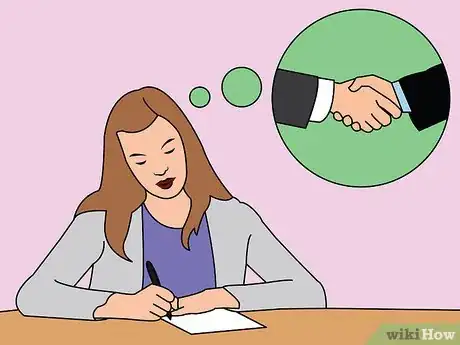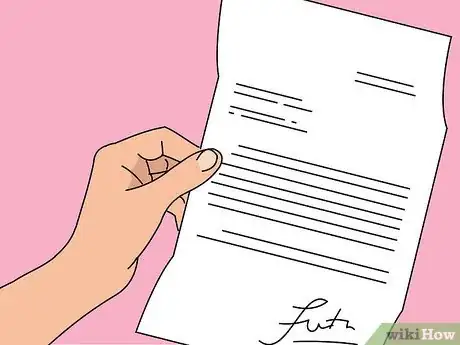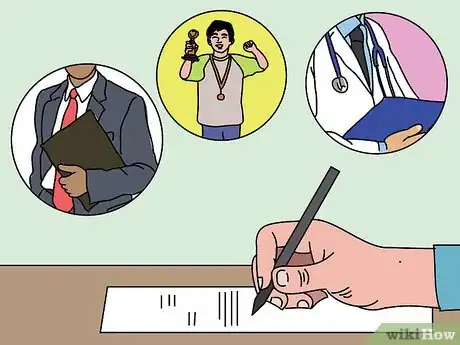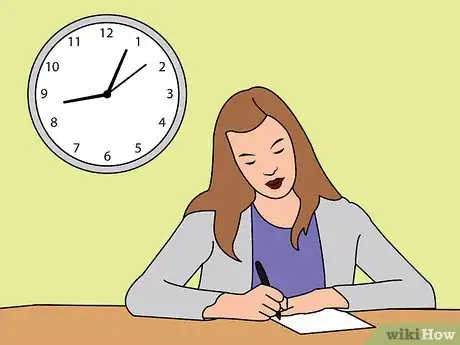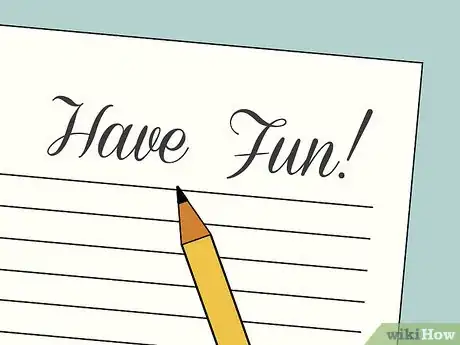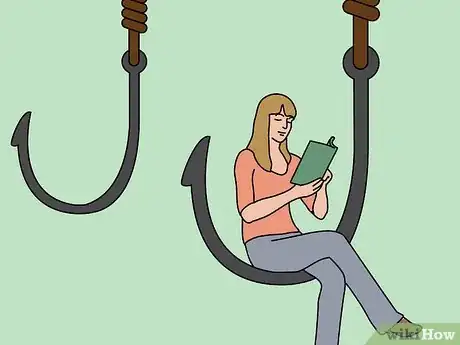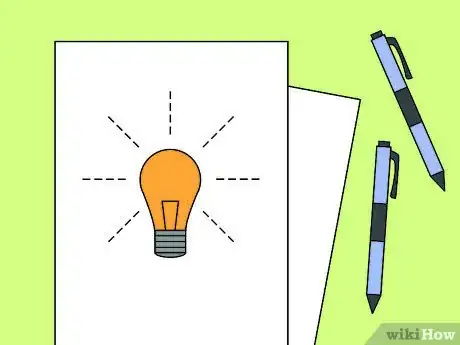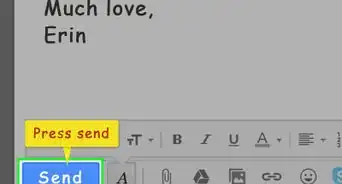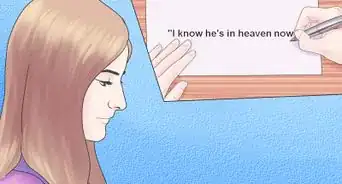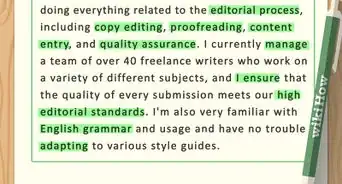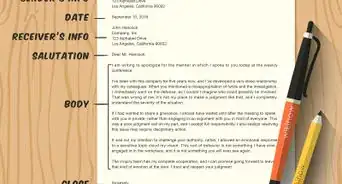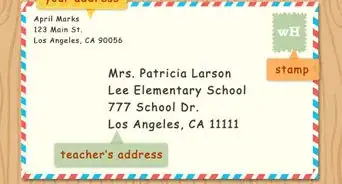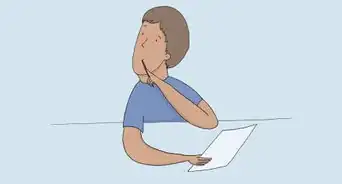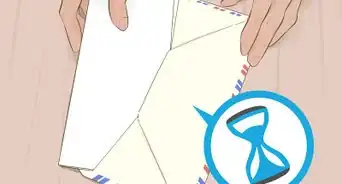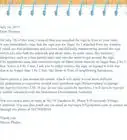This article was co-authored by wikiHow Staff. Our trained team of editors and researchers validate articles for accuracy and comprehensiveness. wikiHow's Content Management Team carefully monitors the work from our editorial staff to ensure that each article is backed by trusted research and meets our high quality standards.
There are 7 references cited in this article, which can be found at the bottom of the page.
This article has been viewed 72,355 times.
Learn more...
You might find yourself needing to write a letter for a number of reasons—both formal and informal. Maybe you need to write a complaint letter to a business, a letter to a friend, or a cover letter for a job application. Whatever the cause, there are some things to consider and keep in mind when writing any letter.
Steps
Writing a Formal Letter
-
1Begin your letter with an engaging opening. If you think of your letter like an essay, the logical first step would be to craft an opening line or paragraph that will catch the reader’s attention, while also briefly outlining the letter’s purpose.
- Creative openings are the best way to catch a reader’s attention. Rather than just opening with a discussion about the weather, try something more interesting. It’s unlikely you really started that letter to tell someone about the weather!
-
2Think of your letter like an essay. You probably have written essays before, and you probably opened them with an idea that was related to the purpose of the essay. Try to do the same with a letter.
- You must have a purpose for writing, so rather than meandering around the point, just come out with it!
Advertisement -
3Keep the body of your letter interesting. If you opened your letter and got right to the point, then use the body of your letter to elaborate on that point.
- Maybe the purpose for writing the letter is to apply for a particular job. You will want to keep the body of your letter clear and concise, but also interesting and engaging.
- If you are still thinking of your letter like an essay, your opening being where you stated your purpose, then your body should be where you would logically “back up” your point, or elaborate on the idea you first brought up.[1]
Writing an Informal Letter
-
1Think of your letter like a story. The body of the letter does not need to be especially rigid or too straightforward, but rather more relaxed and friendly. Use figurative language and imagery. Paint a picture for the recipient of your letter like an author might do for a reader.
- When telling a story in your letter, be imaginative with your writing. Be descriptive, and even use dialogue if you want to. Allow the scene you are relaying to come through like an image.[2]
- In January of 1960, Queen Elizabeth wrote a letter to President Eisenhower. She used a specific image to convey the purpose of her letter by writing, “Seeing a picture of you in today’s newspaper standing in front of a barbecue grilling quail, reminded me that I had never sent you the recipe of the drop scones which I promised you at Balmoral.”[3]
-
2Spend some time discussing what is going on in your life. Once you have gotten to the point and elaborated on or explained that point, you can always spend a few sentences catching your reader up on what has been going on in your life.
- If your recipient is a friend or family member that lives far away, you might let them know how your other friends and family members are doing.
- An actual letter from a friend or family member from far away is an easy, simple way to make their day a bit better. We have come to rely on technology so much that most of us probably do not send snail mail very often, so sending or receiving a letter is fun and different. It can help people far away from us feel more connected to us and our lives.[4]
- If something especially interesting has happened in your life lately, let your recipient know! Tell them exciting news about your career, your love life, or even about recent travels you took. Just try to avoid discussing anything negatively—especially another person. Letters are permanent documents that your recipients could keep for any period of time. You don’t want to write anything that might come back to bite you later. If you have something negative to vent, say it out loud.
-
3Have fun writing your letter. If you use your letter as a medium for creativity and imagination, it will feel just as fun to write it as it will for your recipient to read it.
-
4Write things you want your recipient to remember and keep. Rather than simply having a conversation, a letter is more permanent. It is a physical artifact of your relationship with another person, and that makes it very special.
Keeping Any Letter Interesting
-
1Think of a hook. Regardless of if your letter is formal or informal, it’s always a good idea to immediately grab your reader’s attention and get them interested.[5]
- Some interesting ways to hook your reader might be with a quote, a metaphor (probably related to the point you will be making/information you will be reporting in the letter), or even an anecdote.
- Some of the best cover letters for job applications and even college entrance letters are ones that open with a memorable hook.
- Let your recipient know that you are looking forward to talking to them, or seeing them, again. It’s a simple and straightforward way to end a letter, and it lets them know that even after writing and sending the letter, you are still thinking of them, and missing them.
-
2Write a letter you would want to receive. If you read your letter over and find yourself bored with your own writing, you might want to start again.
- Don’t feel like you have to be too formal, especially if you are writing to a friend or family member. Be light-hearted, honest, and engaging. Throw in some inside jokes, if you want! A letter is, after all, just another form of communication.
-
3Try keeping to a central theme or idea. Like a good story, a good letter does not meander around too terribly much. Instead, it has at least a loose focus on a certain purpose, idea, or thought. Maybe this is the thought, idea, or purpose that first made you sit down to write, or maybe it is one that you came across as your thoughts unfolded while writing.
- If you do not have a single reason for writing—maybe you just felt like writing to that person—that is alright, too. Let them know that! It’s never a bad idea to let someone know you were thinking of them. If a friend moved away and you promised to write, do it! Doing rather than simply saying is an easy way to show someone you care.[6]
- On the other hand, if you do have a specific reason for writing, keep it in mind as you write. If you start a letter saying something like, “I have something really important to tell you” and then skip to talking about the nice walk you went on today, your recipient might get a little anxious to find out what that important thing is.
-
4Close your letter with a recap of your initial thoughts. Look again at your first paragraph and tie on something from that to close your letter.
- Like an essay or even a story, the ending is just as important as the beginning! The ending will be the lasting thought left for your recipient, so try to make it something interesting or impactful.
- In a letter to her husband F. Scott Fitzgerald, Zelda Fitzgerald closed by saying, “I walked on those telephone wires for two hours after holding your love like a parasol to balance me.”[7] If you are writing a love letter, go all out! Use poetic language and a lasting image to leave your recipient with something to remember.
Community Q&A
-
QuestionDo I skip lines in letters?
 Aarya HandaCommunity AnswerNo, you indent lines. You skip lines only for paragrahs or when using quotes.
Aarya HandaCommunity AnswerNo, you indent lines. You skip lines only for paragrahs or when using quotes.
Warnings
- Similarly, avoid revealing and/or negative personal information about other people without their permission, for the same reasons as above.⧼thumbs_response⧽
- Avoid "negative" things in a letter. Remember, a written document of any kind can be kept for years. Also, documents such as letters can be used in a court of law. If you have negative thoughts, verbalize them only.⧼thumbs_response⧽
References
- ↑ http://www.edb.utexas.edu/minliu/pbl/ESOL/body.htm#what
- ↑ http://www.writersdigest.com/editor-blogs/there-are-no-rules/create-powerful-imagery-in-your-writing
- ↑ http://www.dailymail.co.uk/news/article-2531205/Letters-Of-Note-Some-greatest-missives-read.html
- ↑ https://www.themuse.com/advice/the-secret-to-staying-in-touch-with-longdistance-friends
- ↑ http://academics.smcvt.edu/writingctr/Beginning.htm
- ↑ http://psychcentral.com/blog/archives/2009/12/14/5-ways-to-show-you-care/
- ↑ http://www.theguardian.com/books/booksblog/2015/feb/11/straight-from-the-heart-the-best-love-letters-valentines-day
About This Article
To write an effective letter, open with something engaging and interesting to grab the recipient's attention. For example, you could open with a relevant quote or anecdote, or you could include a shocking fact or statistic that relates to the topic you're writing about. However, make sure you pick an opener that's relevant to the rest of your letter, since your letter should only have one main topic. Like you would in an essay, use the introduction of your letter to inform the recipient of what you're writing about, and then use the body of the letter to elaborate. For advice on how to write an effective informal letter, scroll down!

